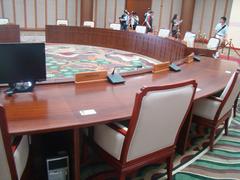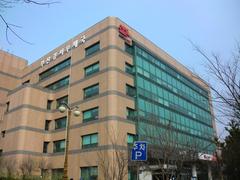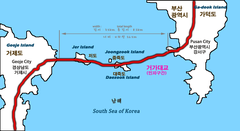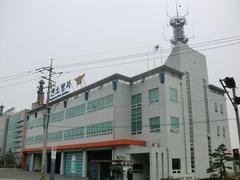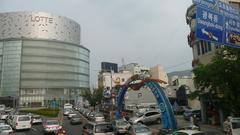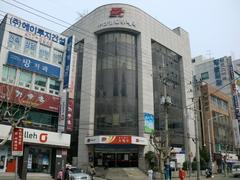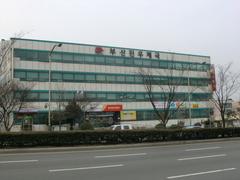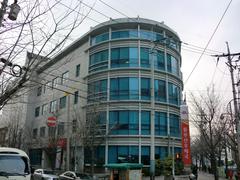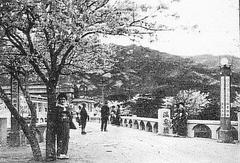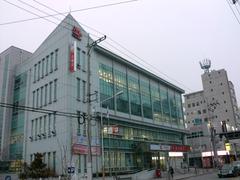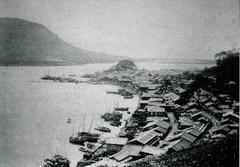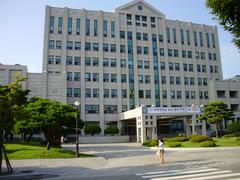Busansinhang Station Visiting Hours, Tickets, and Travel Guide
Date: 04/07/2025
Introduction to Busansinhang Station
Busansinhang Station, also known as Busan New Port Station, is a modern logistics and transportation hub located on the southwestern outskirts of Busan, South Korea. Serving as a key connector for Northeast Asia’s largest deep-water ports, the station plays a pivotal role in both freight operations and the broader urban and economic development of the region. Established to support the rise of Busan’s New Port and facilitate international trade, Busansinhang Station underscores Busan’s status as a Eurasian gateway and a leader in sustainable, technologically advanced logistics infrastructure. This guide covers the station’s historical evolution, visitor information, nearby attractions, and practical tips for making the most of your visit to Busan’s dynamic port district.
For up-to-date details, reference official sources such as the RailLog Korea brochure and KR Inside.
Table of Contents
- Historical Evolution of Busansinhang Station
- Visitor Information
- Cultural and Symbolic Importance
- Nearby Attractions
- Practical Visitor Tips
- Frequently Asked Questions (FAQ)
- Conclusion
- References
Historical Evolution of Busansinhang Station
Origins and Early Development
Busansinhang Station was inaugurated during Busan’s rapid industrialization in the late 20th and early 21st centuries, developed to ease congestion at the North Port and meet the surging demands of international maritime trade. Unlike Busan Station, which primarily serves passengers, Busansinhang was purpose-built for cargo, connecting the New Port’s state-of-the-art container terminals with the national rail network. Its establishment marked a decisive step in supporting Korea’s export-driven economy and aligning with global logistics standards (RailLog Korea).
Strategic Role in Logistics and Urban Growth
As the southern endpoint of the Trans-Asian Railway, Busansinhang links Korea with China, Russia, and Europe, reinforcing Busan’s identity as a strategic Eurasian trade hub. The station’s integration into the Busan Port Line ensures direct, efficient connections between container yards and the broader national rail system, enabling seamless multimodal transport (KR Inside).
Modernization and Technological Innovation
Busansinhang Station has undergone significant modernization, highlighted by the introduction of hydrogen-powered trains and advanced cargo handling systems. A major investment project has improved operational efficiency, environmental sustainability, and real-time logistics management, positioning the station as a model for smart port-rail integration (KR Inside).
Economic and Community Impact
The station’s presence has transformed the surrounding New Port district into a major industrial and logistics hub, generating employment, stimulating local commerce, and supporting balanced regional growth. It has also hosted international trade events and logistics conferences, showcasing Korea’s innovation in port and rail operations (Namu Wiki).
Visitor Information
Visiting Hours and Access
Busansinhang Station operates daily, roughly from 5:30 AM to 11:30 PM, in line with the Donghae Nambu Line train schedules. As the station is primarily freight-focused, there are no regular public visiting hours or passenger ticket requirements. However, special tours and industrial visits are occasionally organized during trade fairs or educational events. For the latest information, check with the Busan Station Tourist Information Center.
How to Get There
- By Train: Mugunghwa-ho trains connect Busansinhang with Busan Station, Masan, and Changwon. High-speed KTX and SRT services do not stop at Busansinhang, but transfers are available at Busan or Gupo Stations (KoreaToDo).
- By Subway and Bus: The station is not directly served by the Busan Metro. The nearest subway stations are Sasang (Line 2) and Hadan (Line 1), with local buses (e.g., 58, 58-1, 221) connecting to the New Port area (Zen Moments in Korea).
- By Taxi/Private Transfer: Taxis from central Busan take about 40–50 minutes, costing 25,000–35,000 KRW (TripSavvy).
- From Gimhae Airport: Use the Busan-Gimhae Light Rail to Sasang Station, then transfer to bus or taxi; total journey about 60–80 minutes (KUP Travel).
Ticketing and Fares
- Train Tickets: Purchase at station counters, automated machines, or online (Korail). Fares between Busan Station and Busansinhang range from 3,000–5,000 KRW.
- Bus/Subway: Local bus fares are 1,300–1,800 KRW with T-money or Cashbee cards. Subway rides cost about 1,500 KRW (TripSavvy).
Station Facilities and Accessibility
Busansinhang Station features elevators, ramps, tactile paving, accessible restrooms, bilingual signage, and staffed information desks. Luggage storage is limited; plan accordingly. Security is maintained with CCTV and personnel.
Amenities and Services
Basic services include restrooms, waiting areas, and convenience stores. Nearby, you’ll find local eateries, small markets, and taxi stands.
Cultural and Symbolic Importance
Busansinhang Station is emblematic of Busan’s transformation from a traditional maritime city into a global logistics powerhouse. Its role in the Trans-Asian Railway, adoption of green transport technology, and support for regional economic development highlight Busan’s resilience and forward-thinking ethos (RailLog Korea).
Nearby Attractions
Songjeong Beach
A serene alternative to Busan’s busier beaches, Songjeong is known for surfing, family-friendly swimming, and fresh seafood restaurants (Away to the City).
Haedong Yonggungsa Temple
This seaside Buddhist temple, founded in 1376, offers stunning ocean views and is especially popular during sunrise and festive periods (Hal Your Travel Pal).
Cheongsapo Daritdol Skywalk
A 72.5-meter glass bridge over the sea, offering dramatic coastal vistas and access to local seafood eateries.
Haeundae Beach and Dongbaekseom Island
Busan’s iconic beach and scenic island walk, featuring the Nurimaru APEC House and panoramic views (Away to the City).
Busan Blue Line Park
A coastal walking and cycling trail, featuring the Sky Capsule monorail and art installations.
Jangsan Mountain
A popular hiking destination with well-maintained trails and city-to-sea views.
Practical Visitor Tips
- Transit Apps: Use KakaoMap or Google Maps for real-time schedules.
- Transport Cards: T-money, Cashbee, and Railplus cards are accepted across buses, subways, and taxis (Korea Travel Planning).
- Language: English signage is present but staff may have limited English; translation apps are useful.
- Wi-Fi: Free Wi-Fi at stations; SIM cards and portable Wi-Fi available at airports and major train stations (KUP Travel).
- Accessibility: The station and nearby public transport are accessible; accessible taxis can be booked via Kakao Taxi.
- Safety: Busan is generally safe, but exercise standard precautions and be mindful in the port area.
- Port Etiquette: Observe posted signs, avoid restricted areas, and always ask before photographing port operations or staff.
Frequently Asked Questions (FAQ)
Q1: What are the visiting hours of Busansinhang Station?
A1: The station operates roughly from 5:30 AM to 11:30 PM, following the Donghae Nambu Line schedule.
Q2: How can I purchase tickets?
A2: Tickets are available at counters, machines, and online. T-money, Cashbee, and Railplus cards are accepted for local transit.
Q3: Is Busansinhang Station accessible for travelers with mobility needs?
A3: Yes, with elevators, ramps, tactile paving, and accessible restrooms.
Q4: What are key attractions near Busansinhang Station?
A4: Attractions include Songjeong Beach, Haedong Yonggungsa Temple, Cheongsapo Daritdol Skywalk, and Haeundae Beach.
Q5: Are there guided tours of the port or station?
A5: Occasionally, especially during trade fairs or community events. Check with local tourist centers for current offerings.
Conclusion
Busansinhang Station is a cornerstone of Busan’s growth as a global trade and logistics nexus, offering visitors a unique vantage point into the city’s maritime heritage and modern transformation. With its strategic location, accessible transit options, and proximity to scenic and cultural attractions, Busansinhang Station is not only a transportation hub but also a gateway to experiencing Busan’s rich history, dynamic urban landscape, and vibrant coastal culture. Plan ahead with trusted travel resources, and let your journey through Busan begin at this remarkable intersection of tradition, innovation, and community.
For more travel tips and up-to-date information, download the Audiala app, follow us on social media, and explore our in-depth articles on Busan’s top destinations.
References and Useful Links
- RailLog Korea, 2025, Messe Frankfurt
- KR Inside, 2025
- Namu Wiki
- KoreaToDo
- Zen Moments in Korea
- TripSavvy, 2024
- SkapetoKorea
- Busan Metro official
- Away to the City
- Hal Your Travel Pal
- Korea Travel Planning
- Travel80
- KUP Travel

